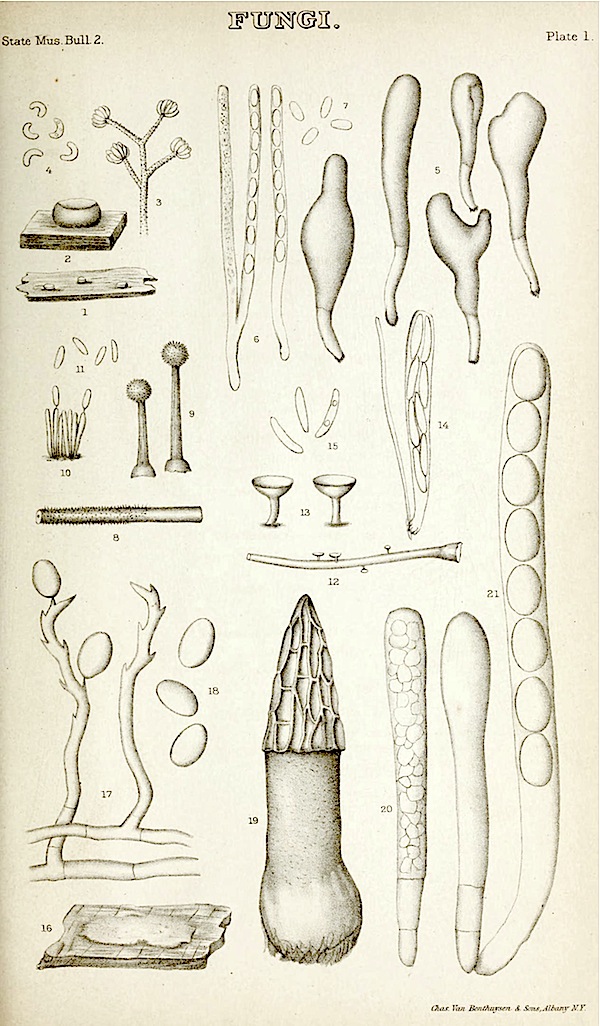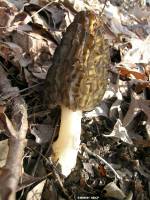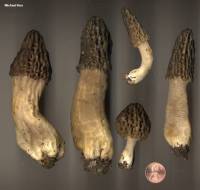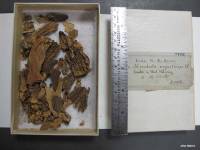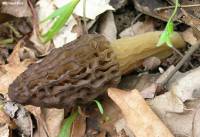
|
|
|
|
Family: Morchellaceae
|
Peck, CH. 1879. Report of the Botanist. Annual Report of the New York State Museum 32: 44––45. MORCHELLA ANGUSTICEPS (Plate I, figs. 19-21.)Pileus oblong-conical and subobtuse or narrowly conical and acute, adnate to the stem, one or two inches high, and about half as broad at the base; ribs longitudinal, here and there anastamosing or connected by transverse veins; stem subequal, hollow, whitish, furfuraceous without and within, even or rarely rough with irregular longitudinal furrows; asci cylindrical; spores elliptical, whitish tinged with ochre, .0008'-.001' long, .0005'-.0007' broad; paraphyses short, clavate, with one or two septa near the base. |

